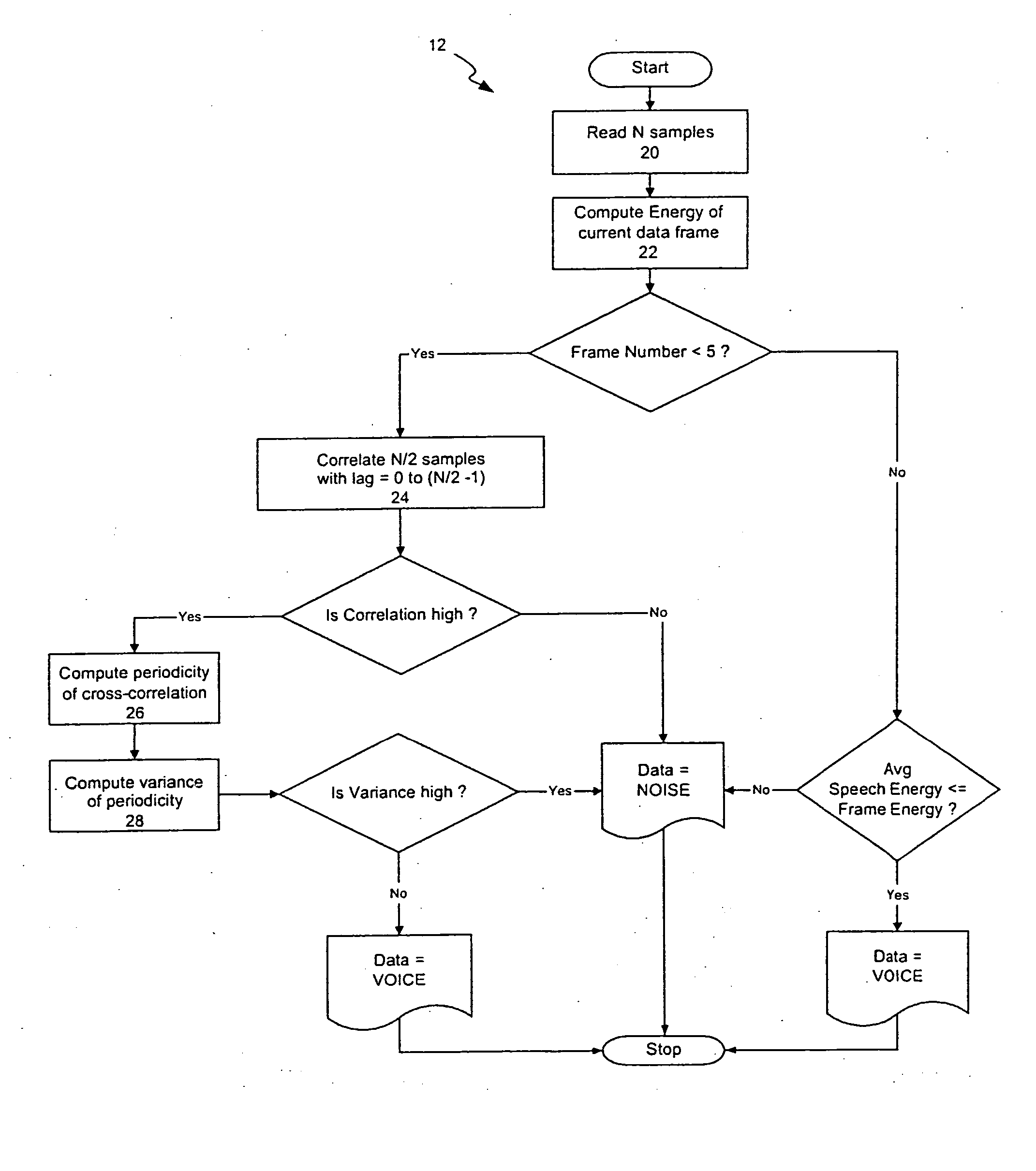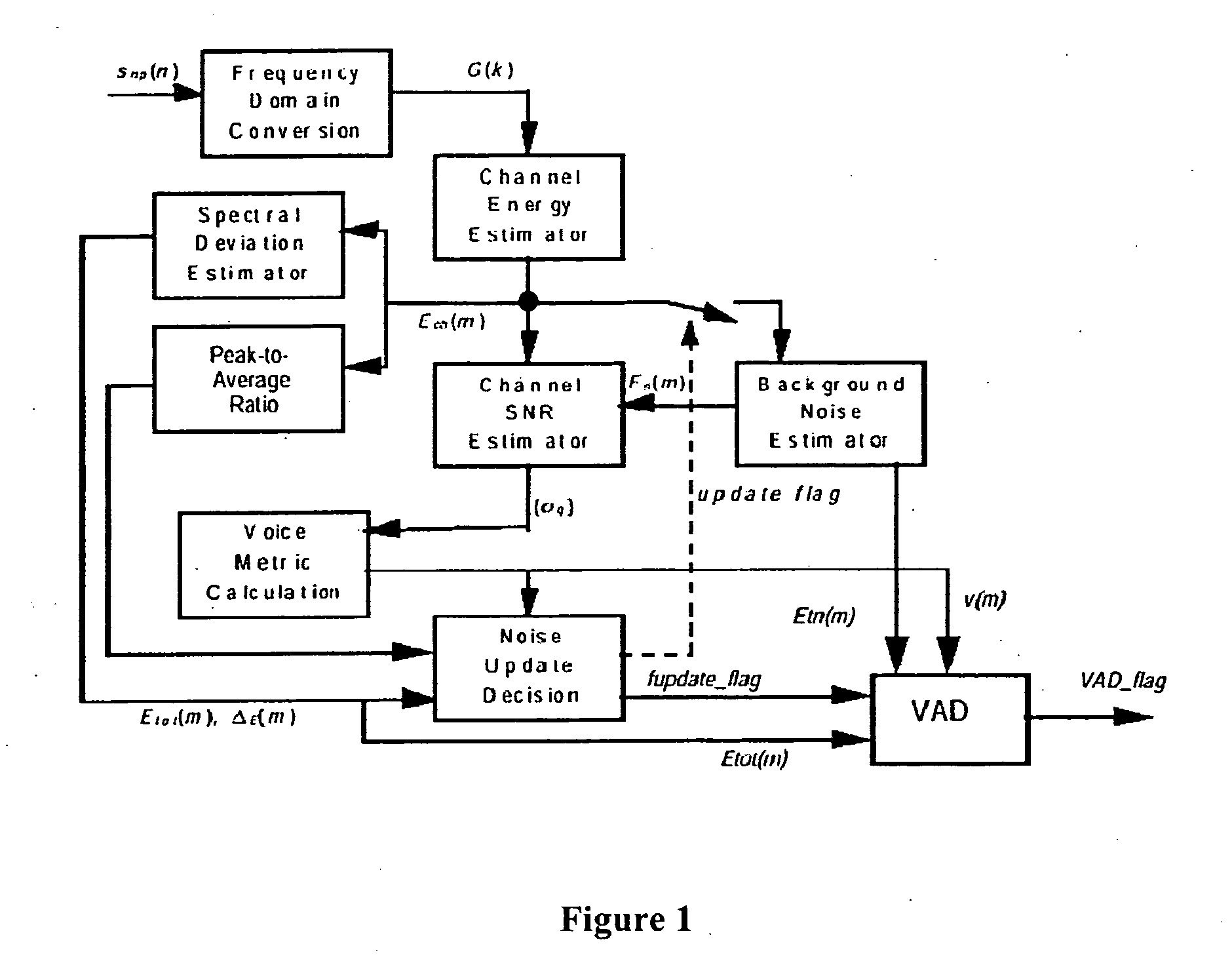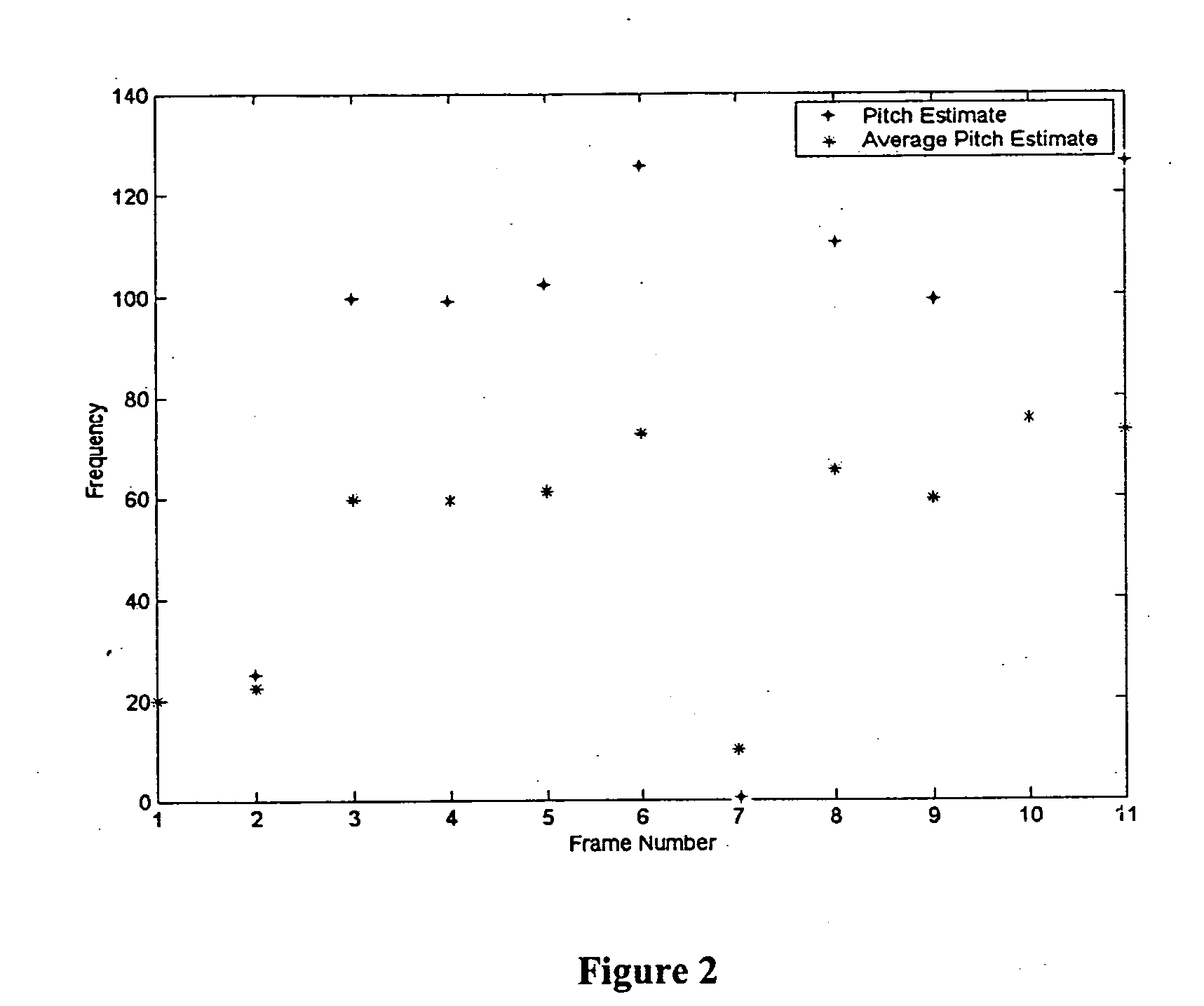Voice activity detector
a technology of voice activity and detector, applied in the field of voice activity detector, can solve the problems of background noise estimate update not being permitted, input signal misclassification into voice/silence regions, and only obtaining satisfactory results
- Summary
- Abstract
- Description
- Claims
- Application Information
AI Technical Summary
Benefits of technology
Problems solved by technology
Method used
Image
Examples
Embodiment Construction
[0056] A voice activity detector (VAD) 10, as shown in FIG. 3, receives coded speech input signals, partitions the input signals into data frames and determines, for each frame, whether the data relates to voice or noise. The VAD 10 operates in the time domain and takes into account the inherent characteristics of speech and colored noise to provide improved distinction between speech and silenced sections of speech. The VAD 10 preferably executes a VAD process 12, as shown in FIG. 4.
[0057] Colored noise has the following fundamental properties: [0058] 1. White noise: the power of the noise is randomly distributed over the entire frequency spectrum and the correlation is very low. [0059] 2. Brown noise: the frequency spectrum, (1 / f2), is mostly dominant in the very low frequency regions. Brown noise has a high cross correlation like speech signals. [0060] 3. Pink noise: the frequency spectrum, (1 / f), is mostly present in the low frequencies. The cross-correlation values of Pink noi...
PUM
 Login to View More
Login to View More Abstract
Description
Claims
Application Information
 Login to View More
Login to View More - R&D
- Intellectual Property
- Life Sciences
- Materials
- Tech Scout
- Unparalleled Data Quality
- Higher Quality Content
- 60% Fewer Hallucinations
Browse by: Latest US Patents, China's latest patents, Technical Efficacy Thesaurus, Application Domain, Technology Topic, Popular Technical Reports.
© 2025 PatSnap. All rights reserved.Legal|Privacy policy|Modern Slavery Act Transparency Statement|Sitemap|About US| Contact US: help@patsnap.com



